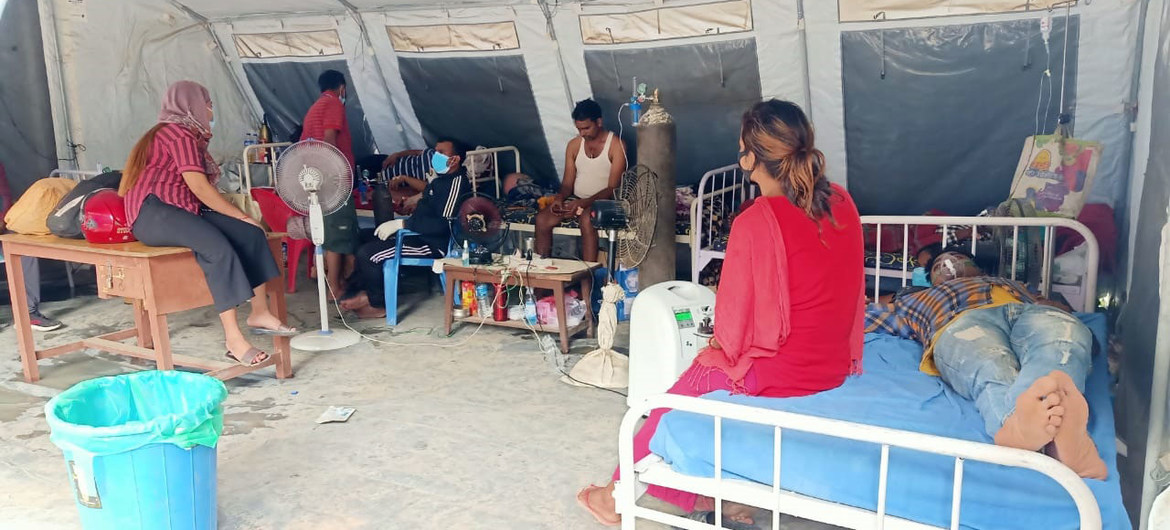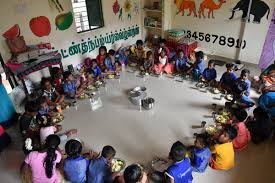The UN Children’s Fund (UNICEF) on Friday launched a $164 million appeal for personal protective gear, together with COVID-19 testing and control equipment, to save lives amidst the deadly wave of infections which continues to sweep across South Asia.
Across the region of almost 2 billion people, more than three new COVID-19 infections are being recorded every second, while over three lives are lost every minute to the disease, according to UNICEF.
George Laryea-Adjei, UNICEF Regional Director for South Asia, warned that the scale and speed of the COVID-19 surge is “outstripping” countries’ abilities to provide life-saving treatment for their populations.
“Hospitals are overwhelmed, there is an acute lack of oxygen and other critical medical supplies, and there is a real risk of fragile health systems collapsing.”
This week saw India record daily deaths at 4,529, the highest ever number since the pandemic erupted last year.
Neighboring Nepal is also experiencing case positivity rates as high as 47 per cent, while Sri Lanka and the Maldives are recording new highs in cases and deaths on a daily basis, according to UNICEF. Bangladesh, Pakistan, Afghanistan, and Bhutan could all face similar devastating surges, it cautioned.
‘We must do everything in our power’
UNICEF also warned of the impact of the crisis on the region’s children and mothers, as already fragile health systems reel under the acute and severe burden of COVID-19.
“We need to do everything within our power to prevent and treat COVID-19 while keeping the critical health care services that children and mothers so heavily depend on running”, Mr. Laryea-Adjei said.
UNICEF’s regional appeal identifies urgent requirements for oxygen equipment, including on-site oxygen-generating plants for hospitals, portable oxygen concentrators and cylinders; medical and diagnostic equipment including RT-PCR and RNA extraction machines; personal protective equipment (PPE) needed to keep health & frontline workers safe.
It also highlights the need of infection prevention and control including, such as hand washing stations, sanitizers and hygiene supplies; as well as therapeutics and medical supplies, including nutrition support.
‘Breaking point’ in Nepal
Meanwhile, UN agencies in Nepal issued a separate emergency response plan, as part of a national effort with partners, to address immediate needs and assist 750,000 of the most vulnerable people affected the pandemic.
After several months of relatively low daily cases, infections began to rise rapidly in mid-April – 150 cases per day to over 8,000 cases per day, within a matter of weeks, according to the UN Country Team in Nepal (UNCT). In addition, with almost half of the COVID-19 tests nationally reporting positive, there are fears that the actual number of infections are much higher than reported.
The surge in cases has overwhelmed hospitals in capital Kathmandu and other cities, with many having to turn away patients due to a shortage of beds, and gaps in vital supplies, including oxygen, are reported across the country. The situation in rural areas is especially worrying, with health facilities facing staff shortage to operate ventilators and provide ICU case management.
The Nepal Covid-19 Response Plan calls for swift action and international solidarity, which are “desperately needed to save lives” and prevent unnecessary suffering today, tomorrow, and in the weeks to come, Sara Beysolow Nyanti, UN Resident Coordinator in Nepal said in a statement.
“The current outbreak is having a devastating impact not just on health but across all sectors, hitting the poorest and most marginalized people in Nepali society the hardest … We have no time to lose.”












